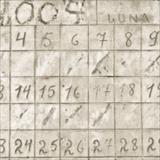
When citing a work in the text, it is helpful to be specific about what part of the work contains the relevant information. Cite specific parts of a source—for example, page ranges, tables, or figures—in the text in APA Style by adding information about the part to a standard in-text citation and writing a standard reference list entry. It is possible to cite a specific part of a source whether you are paraphrasing or directly quoting.
Do not cite a specific part of a source in the reference list. Instead, cite the work that readers would retrieve to find the part. For example, if you cite data from a table in a government report, the government report is the source, and the table is the part. Write a reference list entry for the government report source; then, in the text, write a standard in-text citation for the report (which means providing the government author and year of publication) and add location information for the table to the in-text citation (e.g., provide the table number or a page number for the table).
The following table provides some of the most common examples of parts of a source, including page ranges, chapters of authored books, tables and figures, and video time stamps for audiovisual media such as YouTube videos or films. There are many other possibilities—customize the wording to the work you are citing.
| Part | Example |
|---|---|
| Page | (Stoddard et al., 2020, p. 47) |
| Page range | (World Health Organization, 2019, pp. 202–205) |
| Chapter | (Merenda, 2018, Chapter 14) |
| Paragraph | (Liu et al., 2020, para. 3) |
| Paragraph range | (Bassie & Meagher, 2020, paras. 4–5) |
| Footnote | (Garcia et al., 2020, Footnote 2) |
| Table | (National Institute of Mental Health, 2019, Table 3) |
| Figure | (Lazer, 2020, Figure 4) |
| Time stamp in an audiovisual work | (Patel & Gupta, 2019, 1:09:19) |
| Chapter and verse in a religious work | (The Torah, 1962/2015, Exodus 1:1–6:1) |
| Content ID or page ID from an academic research database | (Svendsen & Løber, 2020, c373) |
Citing specific parts of a source is covered in Section 8.13 of the APA Publication Manual, Seventh Edition
This guidance has been expanded from the 6th edition.

The importance of integrating APA Style into high school classrooms
Read insights from a recent high school graduate about the value of learning APA Style in high school.

How to cite your own translations
If you translate a passage from one language into another on your own in your paper, your translation is considered a paraphrase, not a direct quotation.

Key takeaways from the Psi Chi webinar So You Need to Write a Literature Review
This blog post describes key tasks in writing an effective literature review and provides strategies for approaching those tasks.

How to cite a work with a nonrecoverable source
In most cases, nonrecoverable sources such as personal emails, nonarchived social media livestreams (or deleted and unarchived social media posts), classroom lectures, unrecorded webinars or presentations, and intranet sources should be cited only in the text as personal communications.

The “outdated sources” myth
The “outdated sources” myth is that sources must have been published recently, such as the last 5 to 10 years. There is no timeliness requirement in APA Style.

From COVID-19 to demands for social justice: Citing contemporary sources for current events
The guidance in the seventh edition of the Publication Manual makes the process of citing contemporary sources found online easier than ever before.

Citing classical and religious works
A classical or religious work is cited as either a book or a webpage, depending on what version of the source you are using. This post includes details and examples.
Academic Writer—APA’s essential teaching resource for higher education instructors
Academic Writer’s advanced authoring technology and digital learning tools allow students to take a hands-on approach to learning the scholarly research and writing process.

APA Style webinar on citing works in text
Attend the webinar, “Citing Works in Text Using Seventh Edition APA Style,” on July 14, 2020, to learn the keys to accurately and consistently citing sources in APA Style.